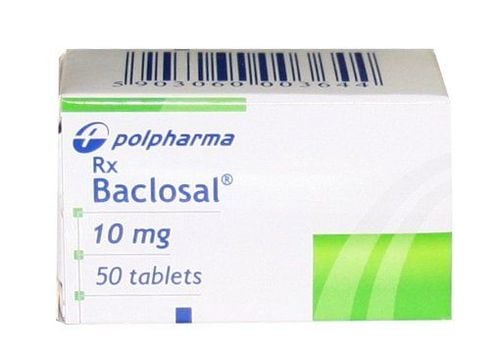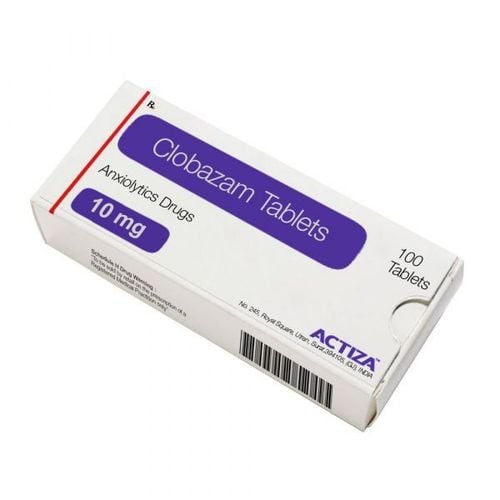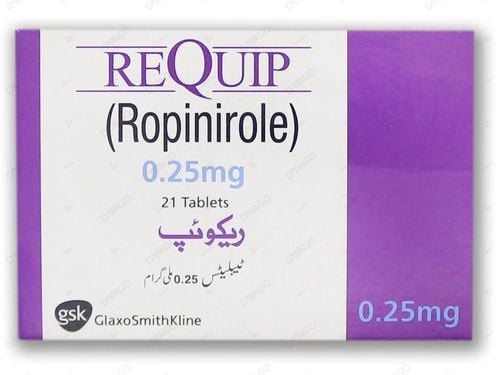This is an automatically translated article.
Neonatal hypertonia is a condition of excessive muscle tone. The most recognizable sign of hypertonia in an infant is that the baby looks stiff and has difficulty moving the muscles. An injury or condition that affects central nervous system function is often the cause of hypertonia. Cases of physiological hypertonia in infants will quickly improve if they know how to correct it.1. What is neonatal hypertonia?
Neonatal hypertonia is when the baby has too much muscle tone. The sign of hypertonia in infants is defined as when tight muscle groups, especially the arms, legs, and neck, can be difficult to move.
Muscles have the property of intrinsic resistance to movement. You can feel the muscle tone if you pinch your biceps while it is relaxing. The resistance you feel is the muscle tone.
Toned muscles allow you to maintain good posture when sitting, control reflexes and help regulate the function of organs in the body.
Therefore, increased muscle tone in the newborn will cause the baby's movements to become robotic because of the inability to relax the muscles and limited flexibility. At this time, children with hypertonia have poor balance, difficult to reach and grasp objects, sometimes they need help when eating. As babies get older, the signs of hypertonia in infants will become more apparent, making it difficult for your child to move their arms and legs, because there is a disconnect between the way their brain communicates with nerves and muscles, telling them when to contract or relax their muscles. Your child may have difficulty walking because their muscles are stiff and may lose balance because the body does not react quickly enough to regain balance.
2. Classification of neonatal hypertonia
There are 2 types of neonatal hypertonia : Spasticity (spasticity): Excessive reflexes and muscle spasticity that increase with movement; Decreased muscle tone (stiffness): Muscle stiffness does not change with movement. To determine which type of infantile hypertonia your baby has, the examining doctor will need to move the baby's arm or leg from a comfortable position at different speeds in several directions and assess the response. the corresponding muscle group response is appropriate or not.
3. Signs of Hypertonia in Newborns Symptoms of hypertonia are the result of muscles being too stiff. Symptoms vary from child to child diagnosed with hypertonia. The severity of symptoms depends on the location of damage to the brain and spinal cord.
Signs of increased muscle tone in infants include:
Decreased range of motion; Difficulty moving arms, legs, or neck; Loss of balance and frequent falls; Limited joint movement and lack of flexibility in the limbs; sharp pain or soreness in the muscles; Involuntary muscle twitching or jerking; Dystonic tremor. Severe cases of infantile hypertonia can lead to contractures, where joints freeze in place and muscles, tendons, tissues, and skin become permanently tightened, making a child's joints short and extremely hard. Spasticity makes it difficult to move, affects body parts and can become a permanent sequelae as the child gets older.
4. Causes of increased muscle tone in infants
Abnormalities in the central nervous system, including the brain and spinal cord, which regulate the way nerves and muscles interact, cause neonatal hypertonia.
The pathways that connect nerves to the brain help manage and control muscle tone. If there is damage or any interference in the brain's electrical pathways, the muscle groups will not be able to hear the signals the nerve is telling them to do. If your baby's muscle tone is too high, as well as if he has dystonia, the brain can't tell the nerves to let your muscles relax.
Thus, causes of airway damage that cause hypertonia include:
Birth injuries such as hypoxia as the baby moves down the birth canal during labor; Brain tumors ; Conditions that affect the way nerves communicate with muscles; Damage to the central nervous system; Problems with your baby's brain processes forming during fetal development; Stroke . 5. Factors that cause physiological hypertonia in infants Several other conditions also affect the way a baby's brain communicates with the body's nerves and muscles, leading to symptoms of hypertonia muscle tone. If your child is diagnosed with neonatal dystonia, your doctor will also examine your child for other conditions that also affect their central nervous system, including:
Paralysis Brain ; Multiple sclerosis ; Parkinson disease .
6. How to diagnose and treat neonatal hypertonia
To diagnose neonatal hypertonia for your child, your doctor will need to examine your child for physical symptoms of the condition by looking at:
Ability to balance and coordinate groups muscle; Motor skills (holding, moving limbs, sitting up); Osteoarthritis reflex; Nervous function; These neurological exams are painless and often require specialized tools, such as a reflex hammer. In addition, your doctor will also need to review your family's medical history and determine if the condition is the result of any complications that occurred before the baby was born or during birth. .
Next, when the problem of hypertonia in the newborn has been raised after examination, the doctor may order additional tests to confirm the diagnosis, including:
Tests imaging tests to look at the brain and spinal cord, such as an MRI or CT scan; Electromyography to measure muscle and nerve function. Ultimately, treatment is set and will vary based on the severity of the diagnosis of neonatal hypertonia. The course of hypertonia treatment may include:
Regular exercise within individual limits; Attend physical therapy to improve range of motion; Local injection with botulinum toxin in the affected muscle groups to turn off nerve signaling; Use muscle relaxants to reduce muscle spasms; Treat any underlying condition with symptoms of hypertonia. The goals of neonatal hypertonia treatment are primarily to improve the mobility and safety of the diagnosed child, especially to reduce the risk of falls as the child gets older. can lead to bone fractures. Many children with severe illnesses may need to choose a properly designed mobile device to improve their disability as an adult.
Meanwhile, increased muscle tone in infants if only mild, parents can support their child to improve partially. Although it may take longer for children to build motor skills, such as grasping, reaching and crawling, with appropriate family support under the guidance of professionals With physical therapy in pediatrics, children can still develop physically similar to children of the same age.
In summary, neonatal hypertonia is a brain injury that severely affects a child's motor ability. Currently, there is no way to prevent infantile hypertonia from occurring, especially if it is due to birth trauma. However, hypertonia can be ameliorated with appropriate medications and supportive therapies, helping children reach their age-appropriate physical development milestones and confidently adjust to life as they get older.
Please dial HOTLINE for more information or register for an appointment HERE. Download MyVinmec app to make appointments faster and to manage your bookings easily.













